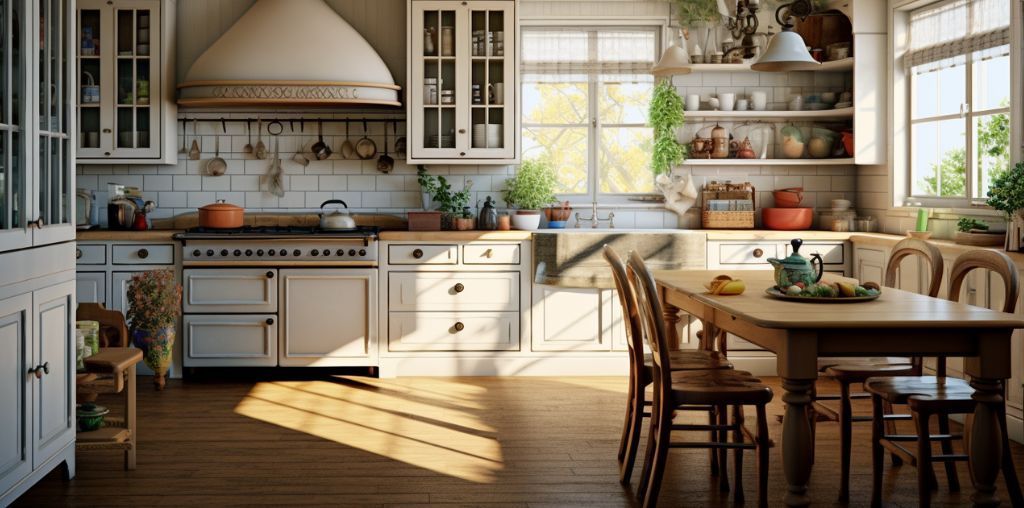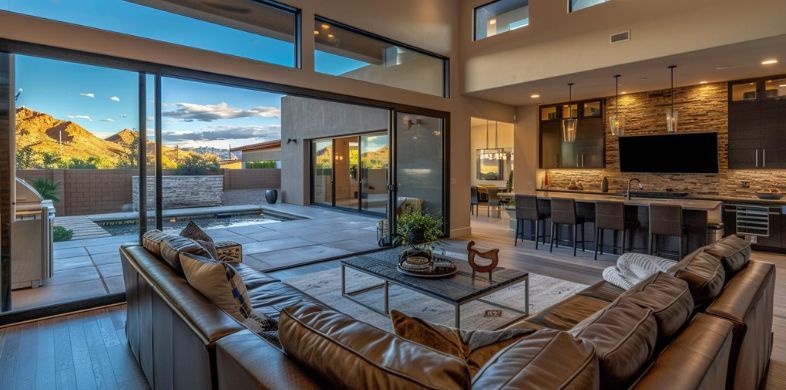
Water Damage on Wood Floors: Types of Damage & Restoration
Water damage is a common and unfortunate occurrence that can wreak havoc on wood floors. Wood floor water damage is a frustrating and costly problem for homeowners. Whether it’s a small spill, a burst pipe, or a natural disaster, any amount of water can seriously damage wooden floors.
The daunting task of restoring water damaged wood floors can seem overwhelming, but understanding the different types of damage can help you take the right steps to restore it.
In this article, we will discuss the different types of water damage that can occur, from stains to crowning, and offer tips on how to repair water damaged wood to its former glory. We’ll also look at the importance of acting quickly to prevent further damage and the role of professionals in the restoration process. Read on.
Wood Floor Water Damage: How Does It Happen?
Water damage on wood floors can happen in several ways, and understanding the causes is essential for prevention and timely intervention.
Here are some common ways water damage can happen to wood floors:
- Plumbing Leaks: Burst pipes, leaking faucets, or faulty plumbing can lead to water seeping into the flooring. Also, ceiling leaks can indeed be a significant cause of wood floor damage s they can seep into the floors below. This can happen due to condensation buildup, roof leaks, or plumbing issues. The damage may not be immediately apparent, but if left unaddressed, all these leaks can result in structural issues and the need for extensive repairs or even floor replacement.
- Flooding: Flash floods and heavy rainstorms can contaminate your home, especially in places where such natural disasters are common. Water entering the building and reaching the wood floors can cause immediate and severe damage. So, if your home is in a flood-prone area like Arizona, it is critical to take prevention measures and have a plan in place to deal with potential water damage.
- Humidity and Moisture Imbalance: High humidity levels in the air can affect wood floors over time. High humidity levels can cause moisture to seep into the wooden floorboards and cause them to expand or warp.
- Poor Installation: Incorrect installation techniques, inadequate sealing, or improper subfloor preparation can leave weak points in the flooring, making it more vulnerable to water damage.
Different Types of Water Damage on Wood Floor
Different types of water damage can affect wood floors, each with its characteristics and implications.
Here are some common types of water damage on wood floor:
- Stains: They appear as dark or discolored patches on the surface of the wood and are caused by prolonged exposure to moisture. These stains can be shallow or penetrate deeper into the wood, depending on the severity of the water damage.
- Mold: When you don’t address water damage properly, it creates a favorable environment for mold growth. Mold can cause discoloration, emit unpleasant odors, and compromise the structural integrity of the wood floor. It not only affects the aesthetics of the flooring but can also pose health risks.
- Warping: Warping occurs when the wood floor absorbs moisture and swells unevenly. This can cause the floorboards to warp or distort, resulting in uneven or bowed sections. Warping is often a result of prolonged exposure to standing water or high humidity levels.
- Buckling: Buckling is a severe form of water damage where the wood floorboards lift and separate from the subfloor. It is typically caused by excessive moisture, such as a significant water leak or flooding. Buckling can lead to substantial structural damage and may require extensive repairs or replacement.
- Crowning: Crowning happens when the center of a wood floorboard is higher than the edges. It occurs when the wood absorbs excess moisture and swells, causing the edges to rise higher than the center.
How to Fix Water Damaged Wood Floor: Tried-and-True Methods
It can be distressing and costly to repair water damaged wood, but with the right methods and tools, you can restore them to their former glory. Whether it’s discoloration, warping, buckling, or mold growth, there are tried-and-true methods on how to fix water damage on wood floors.
Remember, the success of these methods depends on the extent and type of water damage and the condition of the wood floor.
Assess the Damage
If the damage is limited to the top layer of the flooring, you may only need to sand and refinish the area. However, if the damage has penetrated deep into the floorboards, you may need to replace the affected boards.
Dry the Area Thoroughly
Time is of the essence when dealing with water damage. The sooner you address it, the better your chances of minimizing the damage. Start by removing any standing water from the affected area using a wet/dry vacuum or towels.
You can also use dehumidifiers, fans, and open windows to promote airflow and help dry out the wood floor. Make sure to remove baseboards and any other barriers that may inhibit proper drying. It’s crucial to eliminate all moisture to prevent mold and further damage.
Sand the Damaged Area
Once the floor is completely dry, inspect the affected area. If the wood is still structurally sound and the water damage is limited to only the top layer of the flooring, you can sand out the water stains and restore the floor’s appearance.
Use fine-grit sandpaper to gently sand the stained area until the water damage is no longer visible. Be careful not to sand too aggressively, as this can damage the wood further.
Bleach the Stains
If the water damage has left behind stubborn stains, you can try bleaching them. Dilute chlorine bleach with water according to the instructions and apply it to the stained area. Allow it to sit briefly, then rinse thoroughly with clean water.
Be careful when using bleach, as it can lighten the wood color, so it’s best to test it in a small, inconspicuous area first.
Stain and Refinish
After sanding and bleaching, you may need to restain and refinish the wood floor to restore its original appearance, whether you are dealing with warping or cupping. Choose a stain that closely matches the original color of the floor and follow the instructions when applying.
Once the stain is dry, apply a protective finish, such as polyurethane, to seal the wood, provide durability, and match the rest of the wood flooring.
Seek Professional Help
If you are facing extensive water damage, the wood is severely warped or cracked, or you’re uncertain about the repair process, the best option is to call a water damage restoration service. If there has been moisture sitting on the wooden floorboards for an extended period, there is a risk of mold growth.
To fix this, you must address the mold growth, which may require professional help. Flooring experts can assess the damage and guide the best course of action. As you can see, prompt action and professional assistance are essential to mitigate the damage and restore the wood floor to its original condition.
Repairing Water Damaged Wood: Final Words
As you can see, wood floor water damage requires immediate action and careful restoration techniques. Whether the damage is caused by leaks, floods, or spills, it’s crucial to act swiftly to prevent further harm and ensure the best possible outcome.
Now you know how to fix water damaged wood with our tried-and-true methods, but it is important to recognize that extensive and severe water damage may require professional assistance. The expertise and knowledge of professional restoration services will help you navigate the complexities of water damage restoration and provide the best possible solution for your wood flooring.
Don’t hesitate to contact us today to ensure your water-damaged wood floors receive the attention they deserve. We are trained and have the expertise and experience in dealing with water damage on wood floor. We can assess the extent of the damage, provide specialized restoration techniques, and ensure a thorough and successful repair process.
FAQ
Can you reverse water damage on wood floors?
It depends on the type and severity of the damage, but in some cases, water damage on wood floors can be reversed through restoration techniques.
How long does it take for water damage to warp hardwood floors?
It typically takes a day or two to a week for water damage to warp hardwood floors. However, the exact time depends on factors like the amount of water and the environmental conditions.
Can mold grow under hardwood floors?
Yes, mold can potentially grow under hardwood floors if there is excessive moisture or water intrusion. Mold growth under hardwood floors can be challenging to detect since it is not visible from the surface.
Is it cheaper to repair or replace hardwood floors?
It depends on the extent of the damage. If the damage is minimal, it may be cheaper to repair the hardwood floors. However, if the damage is extensive, replacement may be the more cost-effective option in the long run. It’s essential to consult with professionals to determine the best course of action.
Table of Contents
Other Blogs You May Be Interested In













Leave a Reply